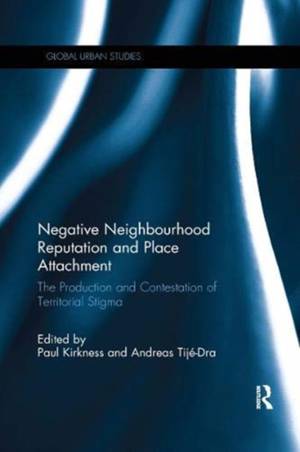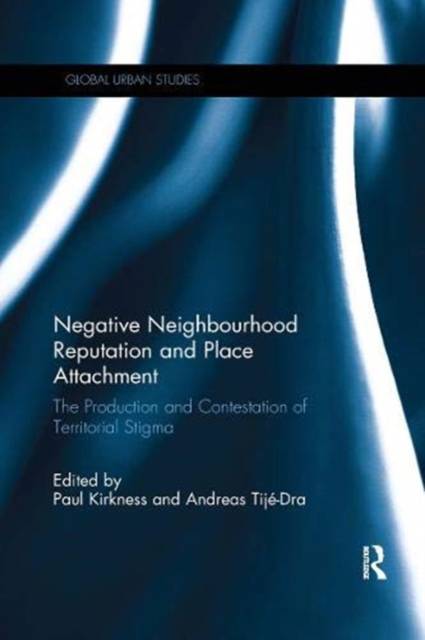
- Retrait gratuit dans votre magasin Club
- 7.000.000 titres dans notre catalogue
- Payer en toute sécurité
- Toujours un magasin près de chez vous
- Retrait gratuit dans votre magasin Club
- 7.000.0000 titres dans notre catalogue
- Payer en toute sécurité
- Toujours un magasin près de chez vous
Negative Neighbourhood Reputation and Place Attachment
The Production and Contestation of Territorial Stigma
Description
The concept of territorial stigma, as developed in large part by the urban sociologist Loïc Wacquant, contends that certain groups of people are devalued, discredited and tainted by the reputation of the place where they reside.
This book argues that this theory is more relevant and comprehensive than others that have been used to frame and understand ostracised neighbourhoods and their populations (for example segregation and the racialisation of place) and allows for an inclusive interpretation of the many spatial facets of marginalisation processes. Advancing conceptual understanding of how territorial stigmatisation and its components unfold materially as well as symbolically, this book presents a wide range of case studies from the Global South and Global North, including an examination of recent policy measures that have been applied to deal with the consequences of territorial stigmatisation. It introduces readers to territorial stigmatisation's strategic deployment but also illustrates, in a number of regional contexts, the attachments that residents at times develop for the stigmatised places in which they live and the potential counter-forces that are developed against territorial stigmatisation by a variety of different groups.
Spécifications
Parties prenantes
- Editeur:
Contenu
- Nombre de pages :
- 224
- Langue:
- Anglais
- Collection :
Caractéristiques
- EAN:
- 9780367218829
- Date de parution :
- 31-03-21
- Format:
- Livre broché
- Format numérique:
- Trade paperback (VS)
- Dimensions :
- 156 mm x 234 mm
- Poids :
- 390 g

Les avis
Nous publions uniquement les avis qui respectent les conditions requises. Consultez nos conditions pour les avis.





